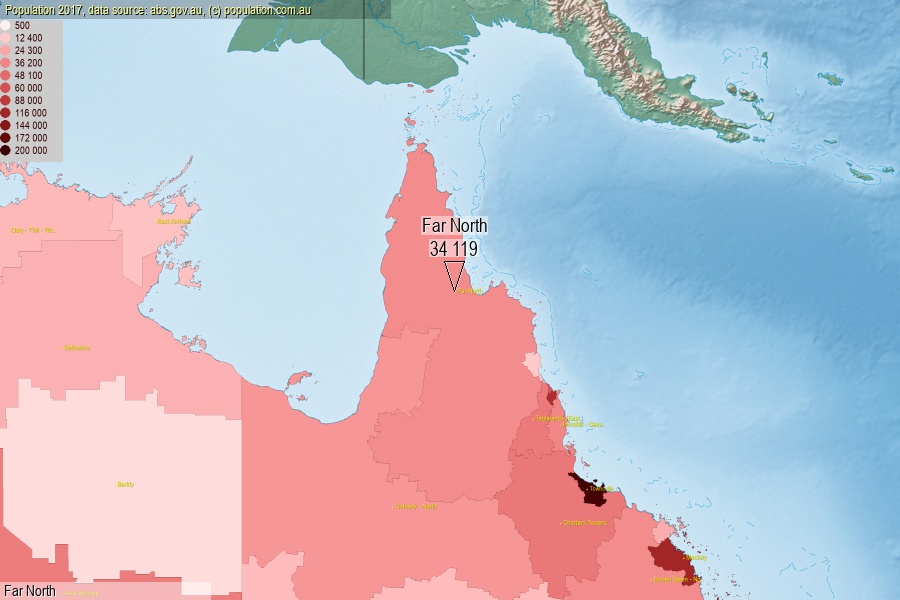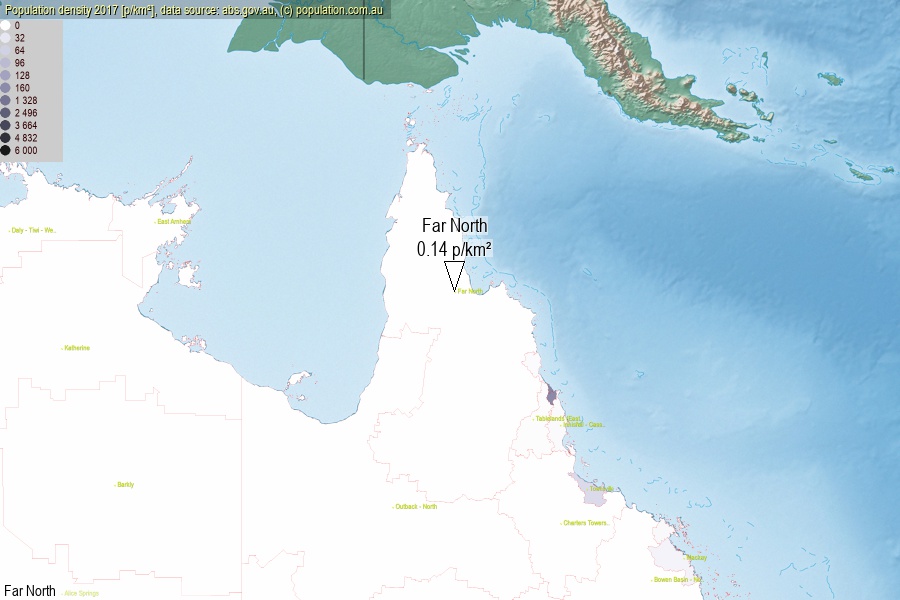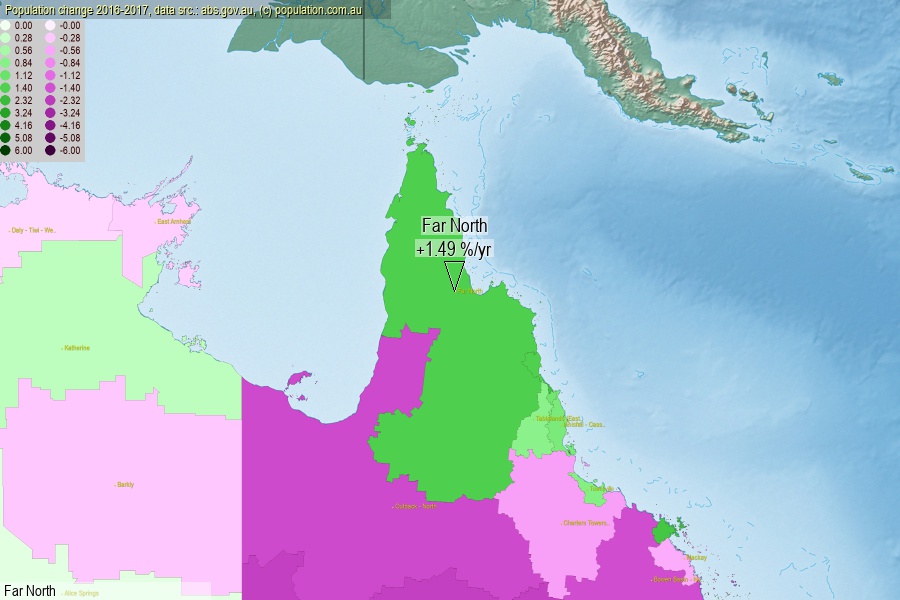 population.com.au
population.com.auLast official estimated population of Far North (as Statistical Area Level 3) was 34 119 people (on 2017-06-30)[2]. This was 0.14% of total Australian population and 0.684% of QLD population. Area of Far North is 250 877.00 km², in this year population density was 0.14 p/km² . If population growth rate would be same as in period 2016-2017 (+1.49%/yr), Far North population in 2025 would be 38 414. [0]



Click to enlarge. Far North is located in the center of the images.
Population [people], population density [p./km²] and population change [%/year] [2]
View borders » (new window) [4]
[1991-1992] +1.18 %/Y
[1992-1993] +1.14 %/Y
[1993-1994] +0.87 %/Y
[1994-1995] +0.87 %/Y
[1995-1996] +1.35 %/Y
[1996-1997] +1.08 %/Y
[1997-1998] +1.20 %/Y
[1998-1999] +1.60 %/Y
[1999-2000] +1.95 %/Y
[2000-2001] +1.79 %/Y
[2001-2002] +0.91 %/Y
[2002-2003] +0.36 %/Y
[2003-2004] +0.59 %/Y
[2004-2005] +0.62 %/Y
[2005-2006] +0.48 %/Y
[2006-2007] +2.55 %/Y
[2007-2008] +1.97 %/Y
[2008-2009] +1.67 %/Y
[2009-2010] +1.50 %/Y
[2010-2011] +1.53 %/Y
[2011-2012] +0.97 %/Y
[2012-2013] +1.36 %/Y
[2013-2014] +0.67 %/Y
[2014-2015] +1.56 %/Y
[2015-2016] +1.59 %/Y
[2016-2017] +1.49 %/Y
[0] Calculated with linear interpolation from officially estimated population
[1] Read more about SA3 and Australian Statistical Geography Standard (ASGS) on abs.gov.au
[2] Population data from Australian Bureau of Statistics (Population and density: 2017; change: 2016-2017)
[3] Digital Boundaries: Australian Statistical Geography Standard (ASGS) 2016.
[4] Border coordinates are simplifyed using Ramer-Douglas-Peucker algorithm.